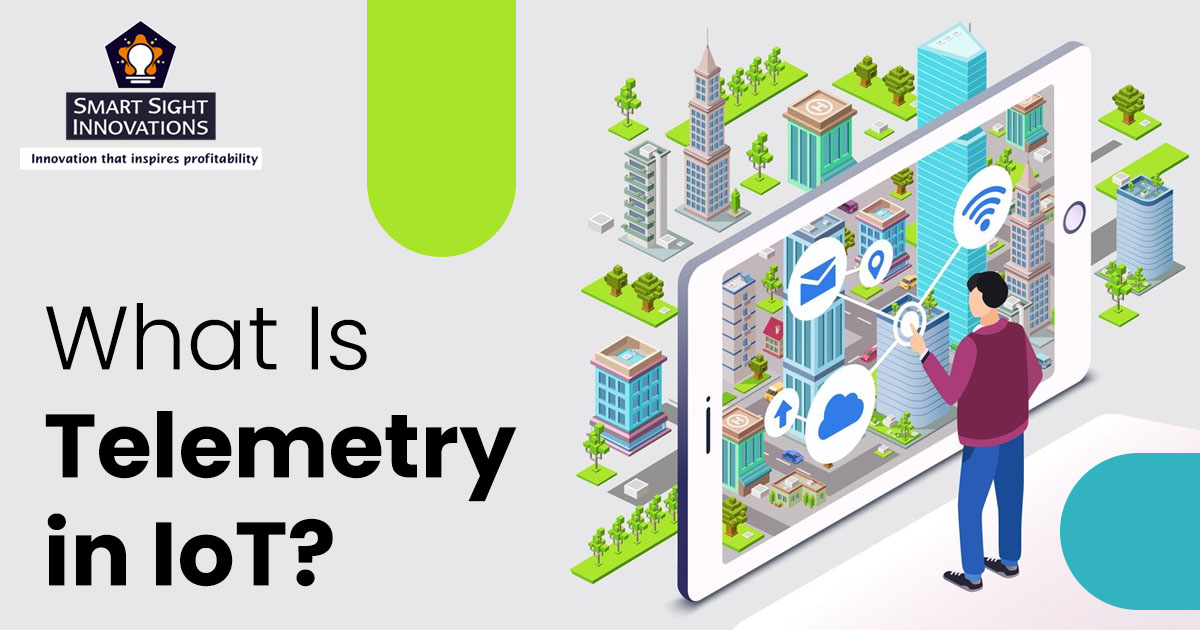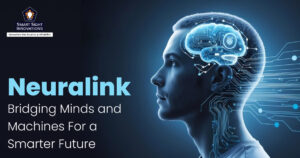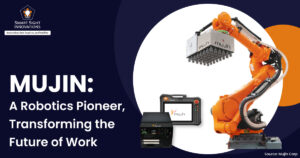
Telemetry, the silent hero of the Internet of Things (IoT), has roots stretching back further than you might think. Early applications, like weather balloons and reservoir monitors, used rudimentary methods to collect remote data. These whispers of information laid the groundwork for the sophisticated systems of today.
Now, in the age of the IoT, billions of devices rely on telemetry. Sensors gather data on everything from temperature to user behavior. This constant flow, like a symphony of whispers, is the lifeblood of the IoT.
Without it, smart devices would be blind and mute, unable to react, adapt, or optimize. This article explores how telemetry works, the different protocols used for data transmission, and its benefits.
What Is Telemetry?
Telemetry, at its core, is the process of automatically collecting data from remote sources and transmitting it to a central location for monitoring and analysis. Think of it as the unseen communication channel that allows devices to “talk” back, providing valuable insights into their operation. Some of its key aspects are:
1. Remote Sources
Telemetry typically deals with data collected from devices or sensors that are not physically accessible or require constant monitoring. This could be anything from weather stations on mountaintops to wearables on your body.
2. Data Acquisition
The collected sensor data is then processed by a microcontroller unit (MCU) or a local processing unit within the IoT device. This unit might perform basic calculations, filtering, or data formatting before sending it onward.
3. Transmission
The collected data is then sent to the desired destination. Here, different communication protocols come into play depending on the application and network constraints. Options include:
- Wireless
Wi-Fi, Bluetooth, cellular networks, or even low-power wide-area networks (LPWAN) like LoRaWAN or Sigfox.
- Wired
Ethernet or USB cables might be used for short-range communication or for devices with constant power availability.
4. Monitoring and Analysis
Once received, the data is analyzed to gain valuable insights about the device’s performance, surrounding environment, or user behavior. This analysis helps us understand how things are working, identify potential issues, and optimize operations.
Importance of Telemetry for the Functioning of IoT
Telemetry is the nervous system of the IoT, allowing for constant communication, feedback, and adaptation. Without this vital flow of information, the complex world of interconnected devices would be blind to its own operation and unable to deliver the transformative potential of the IoT. Telemetry plays a critical role in the functioning of IoT for several key reasons:
-
Provides Real-Time Insights
Telemetry allows for continuous data collection, enabling real-time monitoring of device performance, environmental conditions, or user behavior. This real-time feedback loop is essential for making informed decisions and taking corrective actions.
-
Enables Automation and Self-Learning
By analyzing telemetry data, IoT systems can identify patterns, predict potential issues (like equipment failure), and even adjust settings automatically. This allows for a more intelligent and responsive environment, optimizing performance and reducing the need for manual intervention.
-
Facilitates Remote Monitoring and Control
Imagine managing a network of smart thermostats in a large building. Telemetry allows for remote monitoring of temperature in different zones, enabling adjustments and troubleshooting from a central location. This remote access saves time and resources, particularly for geographically dispersed systems.
-
Unlocks Predictive Maintenance
Telemetry data helps predict potential equipment failures before they occur. By analyzing trends and anomalies, businesses can schedule preventive maintenance, minimizing downtime and costly repairs.
-
Empowers Data-Driven Decisions
The data collected through telemetry becomes the fuel for better decision-making. Businesses can analyze usage patterns, optimize resource allocation, and identify areas for improvement based on real-world data.
What Kind of Telemetry Data is Collected in IoT?
The different types of telemetry data commonly found in IoT are:
1. Environmental Data
-
Temperature and Humidity
These are fundamental measurements used in various applications like smart buildings, agriculture, and industrial process monitoring.
-
Air Quality
Sensors can monitor pollutants, CO2 levels, and other factors for environmental monitoring and smart city initiatives.
-
Light Levels
Useful for smart lighting systems, greenhouses, and even occupancy detection.
-
Noise Levels
Data on noise pollution can be used for environmental monitoring and urban planning.
2. Equipment and Machine Data
-
Performance Metrics
Sensors can track factors like vibration, energy consumption, or pressure to monitor equipment health and predict potential failures (predictive maintenance).
-
Operational Data
Data on machine usage, production rates, or downtime helps optimize operations and resource allocation.
-
Status Monitoring
Simple on/off data or error codes can indicate equipment status and trigger alerts for maintenance teams.
3. Location and Tracking Data
-
GPS Coordinates
Real-time location tracking of vehicles, assets, or even personnel for logistics management, fleet monitoring, or personal safety applications.
-
Geofencing
Monitoring if a device enters or leaves a predefined virtual boundary for security or asset tracking purposes.
4. User and Behavior Data:
-
Activity Monitoring
Wearable devices collect data on steps taken, heart rate, or sleep patterns to promote health and wellness.
-
Smart Home Interactions
Information on appliance usage, door opening/closing, or light adjustments helps personalize user experience and optimize energy consumption.
-
Retail Analytics
Data on customer movement within a store can be used to improve product placement and store layout.
5. Sensor-Specific Data:
Beyond these categories, countless specialized sensors capture unique data points. Examples include:
-
Image and Video Data
Security cameras, traffic monitoring systems, or even drones can collect visual data for security, surveillance, or traffic management.
-
Chemical Composition
Sensors can detect specific gases or pollutants for industrial applications or environmental monitoring.
-
Soil Moisture
Essential data for precision agriculture to optimize irrigation and resource usage.
This is just a glimpse into the vast array of telemetry data collected in the IoT world. As sensor technology continues to evolve, the possibilities for data collection and its impact on various industries will only continue to grow.
Challenges and Solutions in Telemetry for IoT
1. Data Security and Privacy
Challenges
Telemetry systems in IoT often transmit sensitive data, making them vulnerable to cyberattacks and data breaches.
Solutions
Implement robust encryption protocols, use secure communication channels, and adopt comprehensive cybersecurity measures to protect data integrity and privacy.
2. Bandwidth and Connectivity Issues
Challenges
IoT devices often operate in environments with limited or unreliable connectivity, affecting data transmission and system performance.
Solutions
Use adaptive data compression techniques, employ edge computing to process data locally, and choose reliable communication protocols tailored for low-bandwidth environments.
3. Data Overload and Management
Challenges
The massive amount of data generated by IoT devices can overwhelm storage and processing capabilities, leading to inefficiencies.
Solutions
Implement data filtering and aggregation methods to reduce data volume, utilize cloud storage solutions, and leverage big data analytics for efficient data management and analysis.
4. Scalability
Challenges
Scaling IoT telemetry systems to accommodate growing numbers of devices and data streams can be complex and costly.
Solutions
Design scalable architectures using cloud-based platforms, employ distributed processing, and use modular systems that can expand as needed.
5. Interoperability
Challenges
IoT devices from different manufacturers may use various protocols and standards, leading to compatibility issues.
Solutions
Adopt standardized communication protocols, use middleware solutions to facilitate interoperability, and ensure devices are compliant with industry standards.
6. Latency and Real-Time Processing
Challenges
Certain applications require real-time data processing, which can be challenging due to latency in data transmission and processing.
Solutions
Utilize edge computing to process data closer to the source, optimize network infrastructure to reduce latency, and implement efficient data processing algorithms.
Key Technologies Enabling Telemetry in IoT
1. Sensors and Actuators
Sensors collect data from the environment (e.g., temperature, humidity, pressure), while actuators perform actions based on this data. They are the primary data sources in telemetry systems, enabling real-time monitoring and control.
2. Communication Protocols
Protocols facilitate data transmission between IoT devices and central systems.
3. Cloud Computing
Cloud computing provides scalable storage and processing power for vast amounts of telemetry data. This enables data analysis, visualization, and real-time decision-making without the need for extensive on-premises infrastructure.
4. Big Data Analytics
Big data analytics analyzes large datasets to uncover patterns, trends, and insights. This helps in making data-driven decisions, predictive maintenance, and optimizing operations.
5. Edge Computing
It processes data closer to the source (at the edge of the network) to reduce latency and bandwidth use and enhances real-time data processing and immediate response capabilities, crucial for applications requiring low latency.
6. Machine Learning and Artificial Intelligence
Machine learning and AI analyzes telemetry data to predict outcomes, detect anomalies, and automate responses. This helps in improving the accuracy and efficiency of telemetry systems, enabling predictive maintenance and intelligent decision-making.
7. Internet Protocol (IP) and Networking
IP and networking provides the foundational communication network for IoT devices to connect and interact.
8. Data Encryption and Security Technologies
This protects telemetry data from unauthorized access and cyber threats thus ensuring data integrity, confidentiality, and compliance with regulatory standards.
9. Low-Power Wide-Area Networks (LPWAN)
LPWAN facilitates long-range communication with minimal power consumption. This is ideal for connecting remote IoT devices that require long battery life and infrequent data transmission.
These technologies collectively enable efficient, scalable, and secure telemetry systems in IoT, driving advancements and innovations across various industries.
Telemetry Standards and Protocols in IoT
1. MQTT (Message Queuing Telemetry Transport)
- A lightweight, publish-subscribe network protocol designed for constrained devices and low-bandwidth, high-latency, or unreliable networks.
- Ideal for remote monitoring, smart home applications, and IoT sensor networks.
- Supports QoS levels, retains messages, and facilitates efficient data transmission with minimal overhead.
2. CoAP (Constrained Application Protocol)
- A web transfer protocol designed for use with constrained nodes and networks in IoT.
- Useful for small-scale devices in smart cities, industrial IoT, and home automation.
- Built on UDP, supports multicast, low overhead, and easy integration with HTTP.
3. HTTP/HTTPS
- Standard web protocols used for transmitting hypertext requests and responses over the internet.
- Commonly used in web-based IoT applications where direct interaction with web services is required.
- Wide adoption, secure communication via HTTPS, and extensive tool support.
4. LoRaWAN (Long Range Wide Area Network)
- A protocol for LPWANs that allows long-range communication with minimal power consumption.
- Suited for applications requiring long battery life and long-range communication, such as agriculture, smart metering, and environmental monitoring.
- Supports bi-directional communication, secure transmission with AES-128 encryption, and scalability for massive IoT deployments.
5. Zigbee
- A specification for a suite of high-level communication protocols using low-power digital radios.
- Widely used in smart home devices, industrial automation, and healthcare monitoring.
- Mesh networking, low power consumption, and support for a large number of devices.
6. Bluetooth Low Energy (BLE)
- A wireless personal area network technology designed for short-range communication with low power consumption.
- Ideal for wearable devices, smart home products, and health monitoring systems.
- Low energy consumption, wide adoption in consumer electronics, and easy integration with mobile devices.
7. DNP3 (Distributed Network Protocol)
- An open and public protocol used between components in process automation systems.
- Commonly used in utilities like water and electric companies for telemetry data acquisition.
- Robust, secure, supports time-stamped data, and designed for reliable communication over long distances.
8. Modbus
- A communication protocol developed for industrial automation systems.
- Predominantly used in industrial environments to connect supervisory control and data acquisition (SCADA) systems.
- Simple and reliable, supports various network types, and is widely adopted in industrial settings.
9. OPC-UA (OPC Unified Architecture)
- A protocol for machine-to-machine communication created by the OPC Foundation specifically for industrial automation.
- Used in industrial IoT (IIoT) for interoperability between devices and systems from different manufacturers.
- Platform-independent, secure data exchange, and supports complex data types and information models.
10. Sigfox
- A global LPWAN network operator providing a dedicated network for IoT devices.
- Best suited for applications requiring low data rates, long battery life, and wide coverage, such as asset tracking and environmental monitoring.
- Ultra-narrowband, long-range, and cost-effective for massive IoT deployments.
These standards and protocols are fundamental to enabling reliable, secure, and efficient telemetry in IoT applications, ensuring seamless communication and interoperability among diverse devices and systems.













